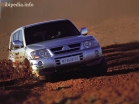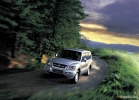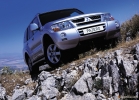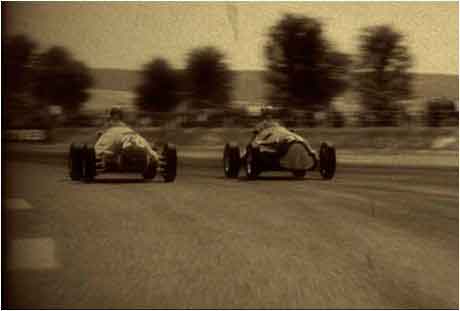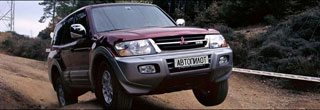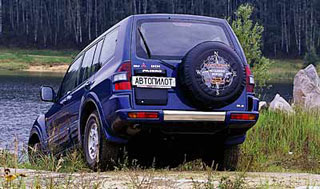Test drive Mitsubishi Pajero (Montero, Shogun) LWB 2000 - 2003 SUV
Release of a wild cat
In April, the official sales of the new Mitsubishi Pajero will begin in Europe.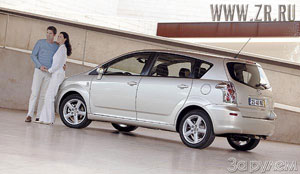 To get acquainted with the story of Pajero, we must return a quarter of a century ago. In 1973, at the Tokyo Mitsubishi Auto Show, she introduced a conceptual alternate under the name of Pajero - in fact, a copy of the American jeep -j52, the heir to the famous Willis. However, the first Pajor could not step further than the podium. However, like Pajero II, shown in Tokyo six years later. A true debut is considered to be his third appearance in public, held in October 1981. The three -door short -wing all -round was literally stuffed with advanced technical solutions at that time, which soon began to copy many eminent automakers. We will call, for example, an independent front suspension, installed instead of a typical sprinkle, diesel engine with turbocharged, and a crane -dimensional engine typical of those years. A few months later, a specially prepared Pajero also won the first award, becoming a winner in one of the categories of the Paris-Dakar rally. Since then, Pajero has been an unchanged participant in most rally raids.
To get acquainted with the story of Pajero, we must return a quarter of a century ago. In 1973, at the Tokyo Mitsubishi Auto Show, she introduced a conceptual alternate under the name of Pajero - in fact, a copy of the American jeep -j52, the heir to the famous Willis. However, the first Pajor could not step further than the podium. However, like Pajero II, shown in Tokyo six years later. A true debut is considered to be his third appearance in public, held in October 1981. The three -door short -wing all -round was literally stuffed with advanced technical solutions at that time, which soon began to copy many eminent automakers. We will call, for example, an independent front suspension, installed instead of a typical sprinkle, diesel engine with turbocharged, and a crane -dimensional engine typical of those years. A few months later, a specially prepared Pajero also won the first award, becoming a winner in one of the categories of the Paris-Dakar rally. Since then, Pajero has been an unchanged participant in most rally raids. 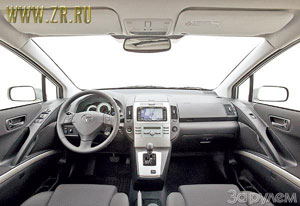 Nine years later, the baton picked up a second -generation Pajero, even more adapted to off -road fun: it acquired a locking rear axle differential, a clearance system and shock absorbers with three rigidity modes. A couple of years ago, a gasoline engine with a direct injection of GDI fuel injection was installed by car. In October 1997, a limited circulation of two and a half thousand copies (that was how much was required then for the homologation of the model) Mitsubishi issues a rally version of Pajero Evolyushn and it becomes clear - this is a harbinger of the upcoming replacement of the second generation of the car. Which confirmed the time: at the end of last year - as before, at the Tokyo Auto Show - the company announced the release of a fully updated third -generation Pajero.
Nine years later, the baton picked up a second -generation Pajero, even more adapted to off -road fun: it acquired a locking rear axle differential, a clearance system and shock absorbers with three rigidity modes. A couple of years ago, a gasoline engine with a direct injection of GDI fuel injection was installed by car. In October 1997, a limited circulation of two and a half thousand copies (that was how much was required then for the homologation of the model) Mitsubishi issues a rally version of Pajero Evolyushn and it becomes clear - this is a harbinger of the upcoming replacement of the second generation of the car. Which confirmed the time: at the end of last year - as before, at the Tokyo Auto Show - the company announced the release of a fully updated third -generation Pajero. Despite significant changes in appearance, the designers managed to preserve the recognizable individual appearance of the alternate. If you put next to the new Pajero predecessor, related features are undoubtedly guessed. Although in the appearance of a beginner, aggressiveness and assertiveness are not so clearly felt - a predatory expression on the face was replaced by more complacency. Nevertheless, the Japanese believe that Pajero looks like a wild cat who is preparing to attack his victim. You can’t say anything - a rich fantasy!
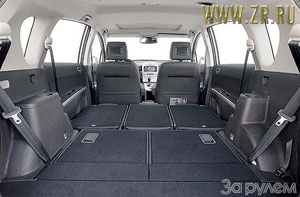 Compared to the old version, the new one looks more solid and squatter. However, this is not surprising - the length and width increased by 160 and 90 mm, respectively (55 and 100 mm in the option with a long base), only the height decreased by 45 mm. The increased dimensions, of course, affected the increase in the internal space - the salon is now much more spacious. In general, the new Pajero was primarily created for a comfortable urban ride, as indirectly evidenced by the body with an integrated frame into it (the old Pajero has a separate spar frame). This increased the hardness of the body torsion and, as a result, reduced vibration, and also improved handling and passive safety. And the design of the body made it possible to lower the floor level by 50 mm, so getting into the salon is now noticeably easier. Wider doors also contribute to this.
Compared to the old version, the new one looks more solid and squatter. However, this is not surprising - the length and width increased by 160 and 90 mm, respectively (55 and 100 mm in the option with a long base), only the height decreased by 45 mm. The increased dimensions, of course, affected the increase in the internal space - the salon is now much more spacious. In general, the new Pajero was primarily created for a comfortable urban ride, as indirectly evidenced by the body with an integrated frame into it (the old Pajero has a separate spar frame). This increased the hardness of the body torsion and, as a result, reduced vibration, and also improved handling and passive safety. And the design of the body made it possible to lower the floor level by 50 mm, so getting into the salon is now noticeably easier. Wider doors also contribute to this. The reader will probably ask: did the Japanese really deprived the car of high patency for the sake of comfort? Fortunately, no. Like his ancestors, Pajero feels completely confident outside the asphalt. First of all, it is the merit of an all-wheel drive transmission SS4-II, which is the evolution of the previous SS4 system. It allows you to choose a full -wheel drive mode with or without an intericseum lock, it is also possible to include a lowering gear. For movement under ordinary conditions, an economical mode with a drive to the rear wheels is provided. The SS4-II system uses a more advanced Wytheft with planetary transmission in the inter-Eseous differential. It allows you to distribute the torque between the front and rear axles in a ratio of 33:67. Another plus of a modernized transmission is the ability to switch from a rear to all -wheel drive up to 100 km/h.
The car is also excellent cross -country ability to new pendants. Unlike the old model, the new Pajero is equipped with an independent suspension of not only the front, but also the rear wheels. The previous dependent three -leaf giving way to an independent two -legged, first tested on the evoluish model. It is important on off -road and the fact that the passages of pendants are increased by 40 and 30 mm, respectively. Well, naturally, updated engines were contributed. In the best way, the diesel modification of Pajero, equipped with a modernized four -cylinder engine, the volume of which is increased from 2.8 to 3.2 liters, is suitable for driving outside the roads. Its power is 175 liters. With. Instead of the previous 140 liters. s., Toring the moment grew to 390 N.M.
With a simple increase in power today, no one will surprise anyone. The new diesel is ecologically cleaner, more economical, and in this, in particular, the merit of a new head with four valves per cylinder. However, in Russia, diesel engines are not very complained of, so the greatest interest will probably cause Pajero with a gasoline engine. The latest version of the six-cylinder 3.5-liter GDI, although it has lost 25 liters in power. With. (220 l. P.), But it became more painful: 80% of the maximum torque (355 N.M) develops at 1500 rpm. But fuel consumption has become lower. In Japan, another engine is intended for Pajero - a 2.5 -liter diesel engine, but such cars will not officially supply such machines to Russia.
So, the first, while the correspondence meeting with the car took place. Mitsubishi Pajero looks quite a worthy opponent for those all -terrain vehicles with whom very soon they will have to enter the struggle for the buyers wallet. But how a wild cat will prove itself in Russian conditions - time will tell. However, it seems that he is provided with success: Pajero - our car is cult ...
The heart of an all -wheel drive transmission is a handout.
The body has grown - it has become more spacious by the salon.
Pajero is old and new: it is noticeable that relatives?
Mikhail Gzovsky
Source: The magazine "Driving"
Mitsubishi Pajero (Montero, Shogun) LWB 2000 - 2003
Mitsubishi Pajero (Montero, Shogun) LWB 2000 - 2003
Mitsubishi Pajero Faults 5 doors: Detailed information| Pajero (Montero, Shogun) LWB 2000 - 2003 | |
|---|---|
| Engine |  |
| Transmission |  |
| Control system and suspension |  |
| Brake system |  |
| Air heating and air conditioning |  |
| Launch and charging system |  |
| Electric components and so on |  |
| Corrosion body stability |

